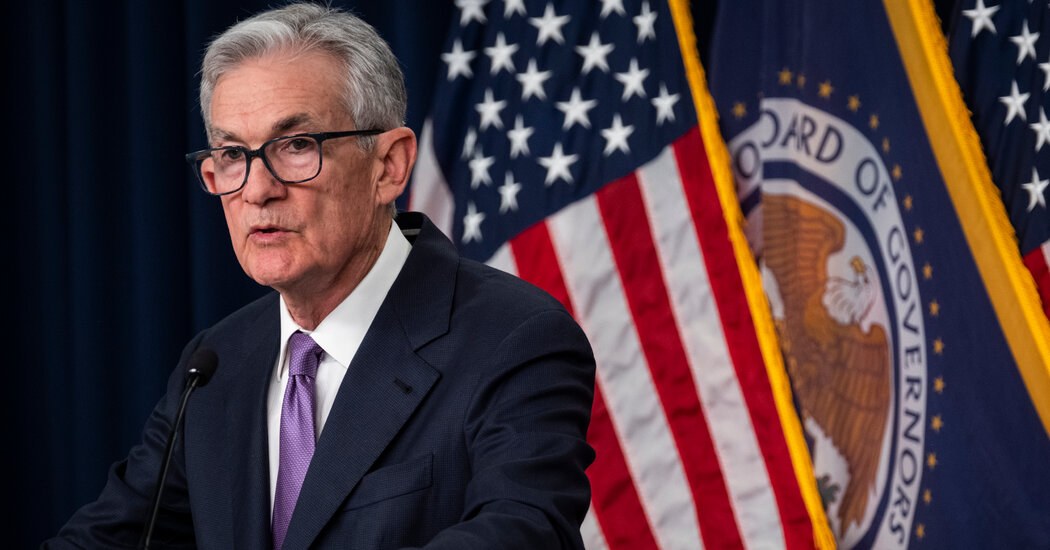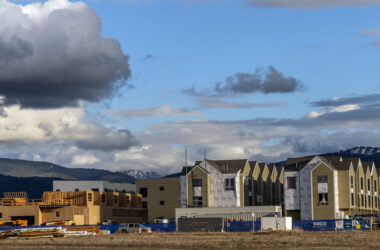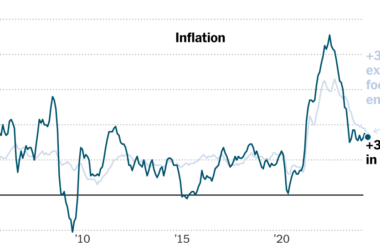Federal Reserve officials will conclude their two-day meeting on Wednesday, and they are widely expected to keep interest rates steady at a two-decade high when they release their policy decision at 2 p.m.
But investors are likely to closely watch the meeting — particularly Chair Jerome H. Powell’s 2:30 p.m. news conference — for hints of when policymakers might begin to lower interest rates. The Fed has held its policy rate in a range of 5.25 to 5.5 percent since July, and officials projected in December that they might lower borrowing costs by three-quarters of a percentage point over the course of 2024.
But both the timing and the magnitude of those rate cuts remain uncertain. On the one hand, inflation has come down more swiftly than many economists had expected in recent months. On the other, economic growth is proving stronger than anticipated, which could give companies the wherewithal to keep raising prices into the future.
Here’s what to know about this meeting.
The Fed’s statement could change.
The Fed’s post-meeting policy statement has suggested that officials will watch economic data “in determining the extent of any additional policy firming that may be appropriate.” Now that further rate increases are looking less and less likely, that language may be in for a tweak.
Powell has a delicate balancing act.
Fed officials do not want to keep interest rates so high for so long that they squeeze the economy too much and tip it into a recession. On the other hand, they do not want to cut rates too much too early, allowing the economy to accelerate and risking a renewed pickup in inflation. Mr. Powell could talk about how officials will try to strike that balance.
Growth vs. inflation will be critical.
A lot of what comes next will hinge on which numbers Mr. Powell and his colleagues decide to focus on — growth or inflation — and investors might get a hint at that this week. Growth and consumer spending are both faster than many economists had expected. But the Fed’s preferred inflation gauge is also below 3 percent for the first time since early 2021, even after stripping out food and fuel costs, which can fluctuate from month to month.
Investors remain uncertain.
The conflicting signals have made Wall Street less certain about what the Fed will do next. Most investors previously expected a rate cut at the Fed’s next meeting in March. But sentiment is now tipping toward a rate cut in May. Mr. Powell’s remarks will have the potential to change those expectations — either making an imminent rate cut more likely, or walking it further off the table.
“It’s a conversation about: When do they start to ease interest rates? Because they don’t want to over-tighten,” said Gennadiy Goldberg, chief U.S. rates strategist at T.D. Securities.
“We’re heading into the last non-live meeting,” he said, meaning that while no rate move is expected in January, rate cuts could be on the table at any meeting thereafter.
The pace of rate cuts is an open question.
Another point of interest to watch out for on Wednesday: When the Fed does start to cut rates, what is that likely to look like? Rate cuts could come quickly and steadily, be large or small, and arrive earlier or later in the year.
Christopher Waller, a governor at the Fed, has already suggested that the central bank should be able to move rates down “methodically and carefully,” rather than in the big rate declines that have at times happened in the past.
Balance sheet details could be coming.
The Fed has been shrinking its balance sheet of bond holdings, after it grew sharply during the pandemic as the central bank purchased securities to help soothe markets and stimulate the economy.
Officials have been downsizing their holdings by allowing their securities to expire without reinvesting them. But policymakers will need to stop doing that at some point, because paring down bond holdings too much could cause chaos in markets.
In fact, minutes from the Fed’s December meeting showed that officials thought “it would be appropriate for the Committee to begin to discuss the technical factors that would guide a decision to slow the pace of runoff well before such a decision was reached in order to provide appropriate advance notice to the public.”
Will that discussion of the nerdy details come at that meeting? Economists will be on the lookout.



